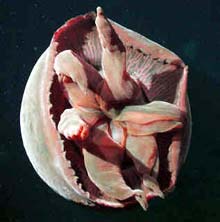MGH research suggests strategies for improving drug delivery to cancer cells
The best cancer drugs in the world are not much good if they cannot get to tumor cells. That problem has been challenging cancer physicians and researchers for years because the physical structure of many tumors can prevent anticancer agents from reaching their targets. In a study appearing in the June issue of Nature Medicine, researchers from Massachusetts General Hospital (MGH) describe a new technique for
The ability to understand how small bodies such as moons switch from orbiting the Sun to orbiting a planet has long remained one of the outstanding problems of planetary science. A paper published in Nature on 15 May shows how this problem has been resolved using chaos theory, enabling scientists to predict where astronomers might search for new moons orbiting the giant planets.
In the last couple of years many small moons have been found orbiting the giant planets in our Solar System. For e
Speed-up may make “topic-sensitive” page rankings feasible Computer science researchers at Stanford University have developed several new techniques that together may make it possible to calculate Web page rankings as used in the Google search engine up to five times faster. The speed-ups to Google’s method may make it realistic to calculate page rankings personalized for an individual’s interests or customized to a particular topic. The Stanford team includes grad
Web users who stick to one or two search engines and learn those well will have better results for their queries than users who try the same query or various engines, a Penn State researcher says.
“There are no wholesale rules about structuring a query that will work on multiple search engines,” said Bernard J. Jansen, assistant professor of information sciences and technology (IST). “And what works on one engine, such as narrowing a query, can have the opposite effect on other search engine
Geologists find meteorites 100 times more common in wake of ancient asteroid collision
Using fossil meteorites and ancient limestone unearthed throughout southern Sweden, marine geologists at Rice University have discovered that a colossal collision in the asteroid belt some 500 million years ago led to intense meteorite strikes over the Earth’s surface.
The research, which appears in this week’s issue of Science magazine, is based upon an analysis of fossil meteor

In photographs, it looks like a big red spaceship cruising the ocean depths. But it’s actually a new species of jelly that was discovered and described by scientists at the Monterey Bay Aquarium Research Institute. MBARI scientists published their research on this unusual animal in a recent online version of the journal Marine Biology.
With a bell diameter of up to a meter wide, the new jelly, named Tiburonia granrojo or “big red,” would seem tough to miss, except that it lives deep below t